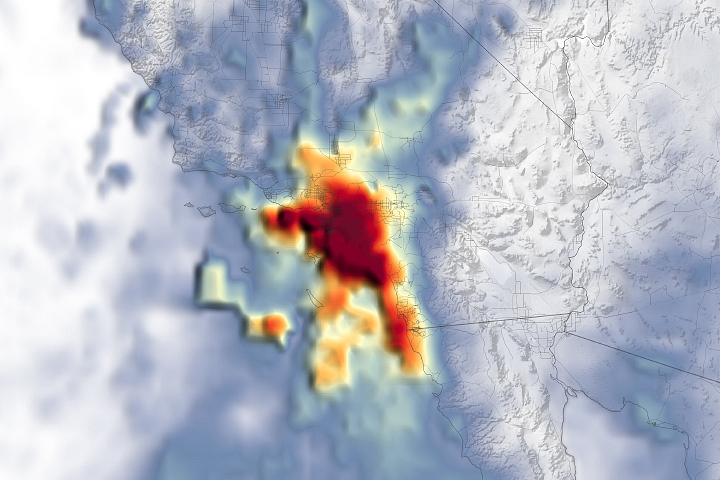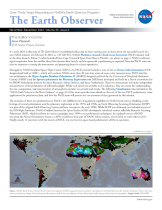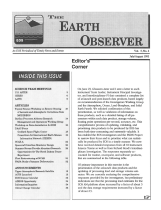- Home
- Missions
- Data
- Communications
- People
- The Earth Observer Newsletter




Recent Imagery
You will be directed to the NASA Visible Earth webpage when you select Images by Mission below, or click on the images at right that are randomly generated to represent four out of all possible topics.
The Earth Observer: Jul - Aug, 1993
In This Issue
Click title below to view page
PENDING (encountered problems when copying/pasting, so still need to manually retype into Drupal)
Editor's Corner
Michael King, EOS Senior Project Scientist
On June 23, Ghassem Asrar and I sent a letter to each Instrument Team Leader, Instrument Principal Investigator, and Interdisciplinary PI that contained a complete list of at-launch and post-launch data products, based largely on recommendations of the Investigators Working Group and the Atmosphere, Ocean, Land-Biosphere, and Solid Earth Panels. We solicited confirmation of this prioritization, as well as validation of information on these products, such as a detailed listing of all parameters within each data product, storage volume, floating point operations per second, accuracy, etc. This comprehensive process of updating, validating, and prioritizing data products to be produced by EOS has been both time-consuming and extremely valuable. It has enabled the EOS investigators and the ESDIS Project to narrow their focus and to prioritize what can realistically be produced by EOS in a timely manner. We now have received detailed responses from all 18 Instrument Science Teams as well as from Richard Rood's Interdisciplinary Investigation. The responses separately accounted for routine, on-request, and software products, that are summarized in the following table.
Of primary importance in this exercise is the prioritization of the at-launch data products and the updating of processing load and storage volume estimates. We are currently analyzing the comprehensive responses provided by the investigators, but preliminary indications are that the processing load estimates for the EOS AM platform alone increased by a factor of about 5 and the data storage requirements increased by a factor of about 2.5.
In addition to aiding in the sizing and management of EOSDIS and the EOSDIS Core System, the highest-priority data products for each instrument are essential for setting the Level-1 requirements in the EOS Execution Phase Project Plan. This important document has now been approved by Dr. Shelby Tilford, Acting Associate Administrator of the Office of Mission to Planet Earth, and Dr. John Klineberg, Director of Goddard Space Flight Center. The Level-1 requirements listed in the Project Plan are a subset of the at-launch data products to be provided by each Instrument Team, and include not only the data product name but also the accuracy and resolution to be provided. These data products are preliminary, pending negotiation of the Statements of Work with the responsible EOS investigators. The Project Plan does not list the parameters within a given product; instead, parameters will be cross-referenced to the Science Plan that will be developed in the next year. The distinction between Level-1 requirements contained in the Project Plan and the additional level-2 requirements to be contained in the Science Plan is the level of configuration control. A modification to the Level-1 requirements will require approval by the Associate Administrator and the Director of Goddard Space Flight Center.
Read more...

